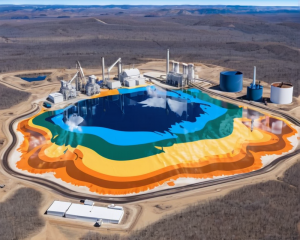The Energy Conundrum of Bitcoin
The ongoing debate surrounding Bitcoin’s energy consumption has ignited conversations that range from technical analyses to fiery Twitter debates. Recently, Sjors Provoost, a notable Bitcoin developer, put forth an eyebrow-raising assertion: if Bitcoin were to maintain up to 100 times its current energy demands, it would need to soar to an astounding price of $20 million per coin. Yes, you heard that right—$20 million! Naturally, that led to some lively discussions on social media.
Waste Energy Breadcrumbs: The New Normal?
Critics of the Bitcoin network often argue that its energy demands are unsustainable, yet supporters like Provoost argue that Bitcoin actually capitalizes on energy sources that would otherwise go to waste. While it might sound like an environmentalist’s dream, Bitcoin proponents liken its energy acquisition to scavenging for waste energy crumbs in a buffet no one else wants to touch.
Energy Utilization Stats
To give you some perspective, fellow developer Matt Odell shared a graphic indicating that Bitcoin currently accounts for a mere 0.49% of the world’s wasted electricity and only 0.16% of global electricity use. Talk about being the underdog!
Market Cap and Mining Subsidies: The Numbers Game
Provoost’s calculations reveal a curious discrepancy: if Bitcoin is to increase its energy use alongside its network changes, the cryptocurrency would need an astronomical market cap of $420 trillion by the year 2033. “But a $420 trillion market cap is absurd, more than all real estate combined,” he commented, casting doubt on the feasibility of this scenario.
A Glimpse into the Future
With Bitcoin’s halving cycles, where the block subsidy—the amount of new BTC created per mined block—gets slashed roughly every four years, the prize for mining keeps shrinking. Provoost suggests that despite the influx of more hardware and thus, more energy, the rising transaction fees could help offset some costs. “The mining subsidy would not be enough for Bitcoin to use more than 1% of global energy,” he stated, implying that Bitcoin may just scrape by on ‘waste energy breadcrumbs’ for years to come.
The Challenges Facing Bitcoin Miners
But let’s not sugarcoat it—Bitcoin miners are currently feeling the heat, especially as the price of BTC keeps dropping and mining becomes less profitable. Some miners have reportedly sold off 14,000 BTC in a recent capitulation, mirroring historical trends of market bottoms. Ouch! If you’re feeling sorry for them, just remember they’re all in it for the long haul—or the next price boom.
Understanding the Puell Multiple
This brings us to the Puell Multiple—a fancy term for comparing the value of newly mined BTC to its 365-day moving average. Currently, this metric hovers at historical lows, echoing the struggles faced by miners during this bear market.
As this energy debate unfolds, one thing seems certain: Bitcoin enthusiasts and skeptics alike will be watching the sparks fly—though hopefully not literally. Amidst the frustration and heated discussions, let’s hope for a balanced perspective on Bitcoin’s energy future.















+ There are no comments
Add yours